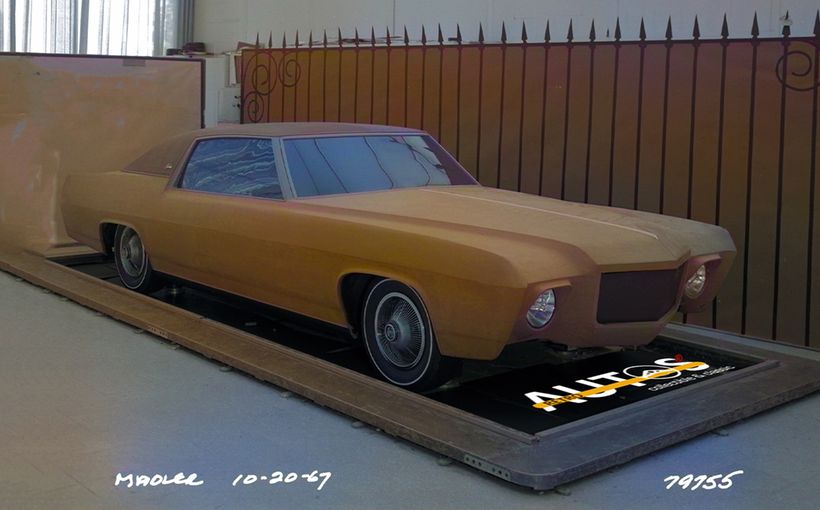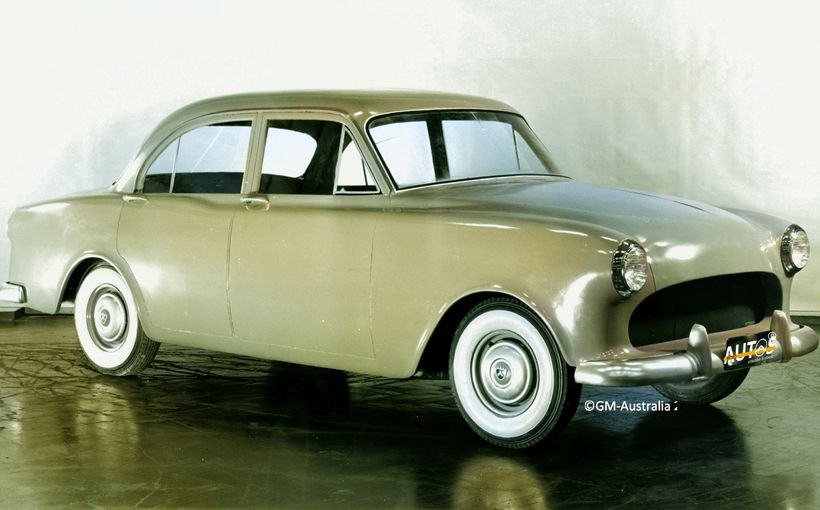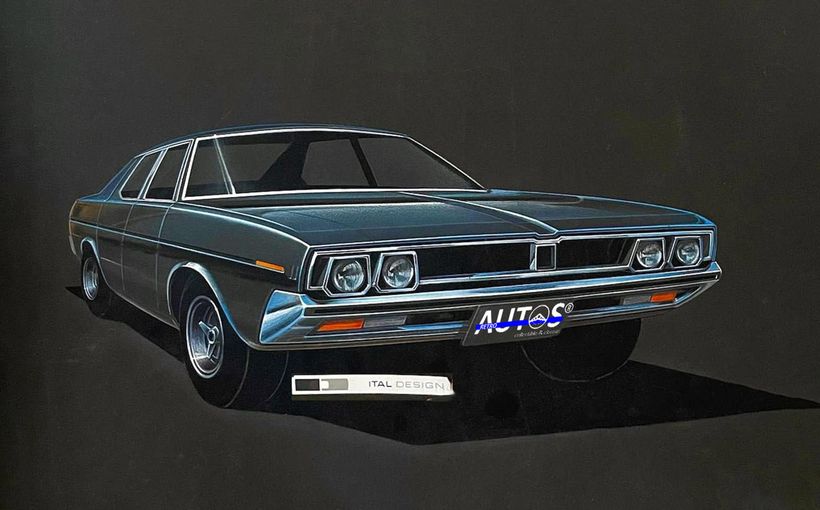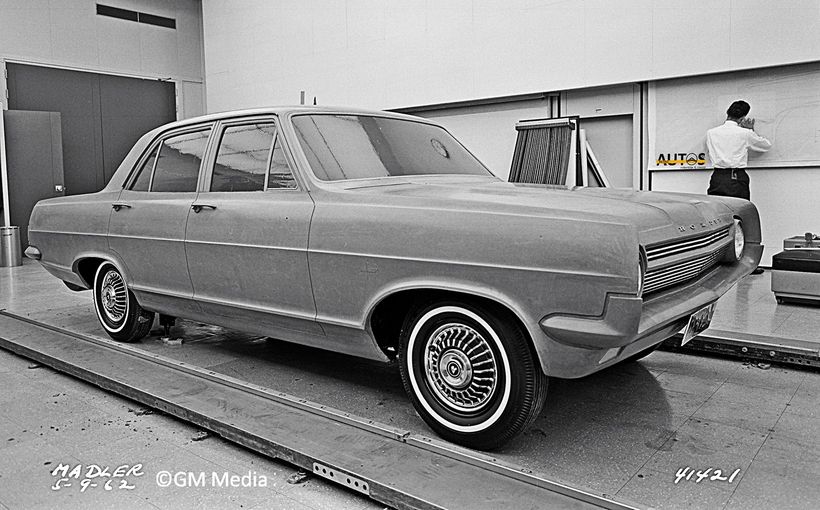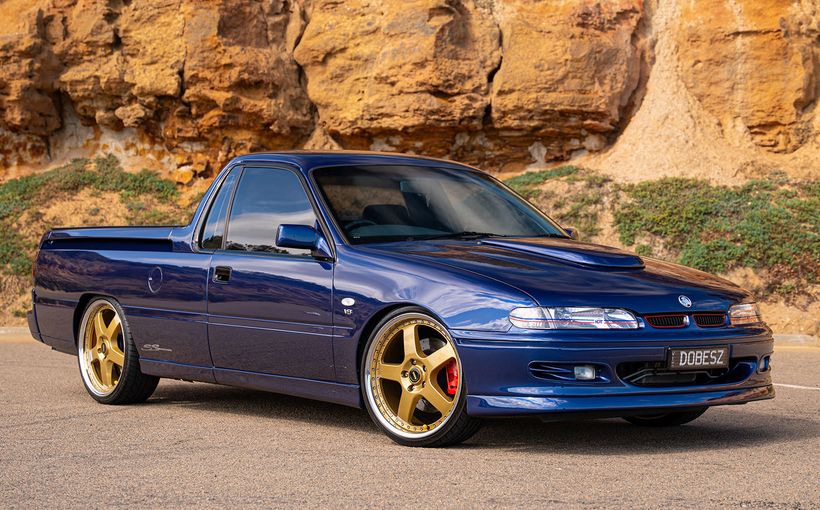EJ Holden 60th anniversary: 1,000,000 reasons to celebrate or a $500,000,000 error?

1962: A pivotal year. Part 3
Where were you in 1962?
Had you been at Holden’s Dandenong factory on 25th October,1962 you would have seen the one millionth Holden, an Euroa Gold EJ Premier, driven off the production line.
No car company had ever achieved this milestone in Australia. Just 13 years and 11 months earlier the 48-215 had been launched. And now, here was Holden celebrating its 1,000,000th.


The success of Holden motivated Ford, Chrysler and BMCA to build their own affordable, “all-Australian”, family sized cars. The economic multiplier of the “Big Four” through suppliers, employment, investments and taxes helped underpin a growing economy and increasing affluence. And 1962 was the year it all came together, making it a milestone year in our automotive history.


This story celebrates the 60th anniversary of the EJ Holden. It is the third in a four-part series showcasing the “Big Four” of 1962. I’ve covered R/S series Valiant and Austin Freeway-Wolseley 24/80 in previous two editions. There are links at the end of this story. The next edition focuses on the XL Falcon and Zephyr MkIII.
In this edition I also evaluate the intervention of GM’s design boss, Bill Mitchell, to restyle the EJ mere months before its 30th July release date. Why did it happen? Could the EJ have benefited from Mitchell’s design input much earlier? Would his input have meant the EH’s iconic shape could have debuted on the EJ? What did Holden lose as a result?


EJ Development: Refinement comes almost too late.
Holden’s chief stylist Alf Payze began designing the EJ in late 1957. It progressed through many variations. Holden’s previously secret Product Planning Program document, dated April 1959, reports that the sedan’s shape was finalised in February 1959 and the wagon two months later.



The development of the EJ coincided with profound changes inside GM. Its vice president of design for 30 years, Harley Earl, was retiring at the end of 1958. His successor was Bill Mitchell.
During his long tenure, Earl had focused on the American market. He allowed Holden, Opel and Vauxhall, who reported into General Motors Overseas Operations (GMOO) in New York, to follow general guidelines overseen by GMOO. Mitchell was different. He expected close alignment with the styling themes he championed.


Although the photographs taken at the time show Payze’s EJ to be unrefined and visually heavy, it was generally aligned with GM’s forthcoming 1961 models. The curved A pillar and distinctive belt line would appear on the 1961 Chevrolet. The notched C pillar reflected GM’s “flying wing” roof line on its pillared sedans. The door handles are indented, an innovative idea for the time.


The car’s lack of subtlety is not surprising. Back in the late 1950s Holden’s senior management, which included the newly appointed American boss, Harlow Gage, did not give top priority to styling. Their focus was on ensuring supply met demand. But the market was changing.
When the Falcon arrived, styling quickly became a reason for purchase. Holden’s senior managers ought to have predicted this market shift. Asking Mitchell’s advice in 1959-60 about the EJ’s styling would have been an astute move. A quick phone call would have sufficed. “Hey Bill, we’d appreciate your opinion about the EJ. We think the Falcon will be launched here and maybe the Valiant. We need to ensure the EJ looks the best it can be.” That’s all it would have taken.

In September 1960, construction began on a fleet of sixteen fully operational experimental prototypes, to be tested at the company’s proving grounds at Lang Lang, Victoria, and in the USA. The first car was ready on 29th November.


OS-1: History Changer
Two experimental sedans, designated OS-1 and OS-2, were allocated to GMOO for testing at GM’s Milford, Michigan, proving grounds. OS-1 was completed on 2nd June 1961 and dispatched. OS-2 was finished on 22nd September.
Make no mistake, OS-1 is the car that changed Holden’s design direction and management structure for the next six decades. It arrived in the USA in mid-July and was stored under a cover in one of the Advanced styling studios. And that’s where it was first seen by two of Mitchell’s best designers, Paul Gillan, who was the manager of the Advanced studios, and Joe Schemansky.

In his must-have book Heart of the Lion, Dr John Wright relates what happened next:
“Joe Schemansky had an intimate knowledge of what was and was not acceptable in the GM design world of 1961. This model was not.”
Dr Wright quotes Schemansky as saying:
“I lifted the cover and correctly guessed that this car was a Holden. ‘This is awful’ I said to Paul. ‘Bill Mitchell ought to see this.’”

At the same time as the EJ was being examined in Detroit, Payze and his team had completed its successor, the EH. They had also commenced shaping the 1965 EF, later coded HD. Neither of these cars have appealing lines. The EH is fussy. The EF/HD is bland. Research of Holden’s and GM historic documents indicate that photos of the EH and EF were sent to GMOO. You can read more about the EH and EF/HD in the May 2018 and April 2019 editions of Retroautos, respectively. Links are at the end of this story.


What Bill Mitchell did next
When Mitchell saw the EJ he obviously shared his views with GMOO’s top executive Earl Daum, a former Holden managing director from 1953 to 1959. Whatever he said had an immediate impact.
The GM Board of Directors met on 3rd August and Mitchell was asked to “instigate changing certain design features of the 1962 Holden.” Mitchell was also asked to design the EH, the 1965 EF/HD and the 1964 Opel Rekord and Kapitan. Photos of the Kapitan proposed by Opel reveal a car of a similar non-descript appearance as the EF/HD Holden.

That the GM Board met to discuss the EJ, and Daum, Gage and Opel’s boss, Nelson Stork, quickly agreed to these abrupt and far-reaching changes in responsibilities in their companies, provides two insights. The first demonstrates Mitchell’s significant influence on design in GM and with the Board. The second suggests that the decision makers at GMOO, Holden and Opel may have suddenly realised that they had underestimated the impact of the new Falcon in Australia and the 1960 Ford Taunas 17M in Germany. Both were stylish cars and winning sales at the expense of GM’s products.

It was also an easy decision to give Mitchell the styling responsibilities. If he thought he could do better, then that’s exactly what GM was paying him to do. If the Mitchell-influenced cars sold well, then everyone could claim success. If not, then he’d carry the criticism.

The EJ’s re-work was assigned to Stan Parker in Advanced studio #3. With the car’s release only 11 months away it was a rush job. To save time, OS-1 was used as the styling “buck” rather than a clay model. The styling had to be finished and approved, and OS-1 returned to its original configuration and sent to Milford proving grounds for reliability testing by 18th October.


Parker worked fast. By 23rd August, OS-1 had been converted into a two-sided model. The grille and rear end were cleaned up and simplified. The Australian styling was retained on the right side, with minor trim changes. The left side featured a wider C pillar, a new front fender which carried the belt line forward to the headlights and a more prominent rear fender.
These proposals were reviewed on 7th September by GM Chairman Fred Donner and GM President John Gordon, along with Daum and Gage. They approved the new grille, rear end simplification, new bumper bars and parking light locations. Parker’s left front fender was also adopted. The Australian C pillar and rear fender shape were retained. OS-1 was then restored to its original configuration and shipped to Milford.
The project moved so quickly it was not until 12th September that a styling department memo caught up with project activities, summarised the Board’s decisions and approval of Parker’s changes.

Although Parker’s make-over resulted in a more attractive and less visually heavy automobile, the basics of what Payze and his team had developed remained intact. The Australians still had much work to do because they had responsibly for the EJ wagon and commercials.


As soon as the EJ was approved Parker started work on the EH sedan and three alternatives for the EF/HD. The work on the EF/HD was taken over by Leo Pruneau and Don Lasky in March 1962 when Parker was promoted to lead the Cadillac studio.

The transfer of Opel’s and Holden’s design work to Detroit was not considered a permanent nor feasible arrangement. Mitchell knew they’d have to be self-sufficient, under the leadership of senior managers aligned to his thinking. Joe Schemansky made visits to Melbourne during 1963 to evaluate the local situation. On 1st April, 1964 he was appointed Holden’s first design director. There’s a link to my Retroautos biography of Joe at the end of this story. Clare MacKichan, who was head of the Chevrolet studio, went to Opel as its design boss in late 1962.

Super Special: A late addition for a premier idea.
Meanwhile, in Australia, an August 1961 update to the Product Planning Program announced a new addition to the EJ range, a luxury “Super Special” sedan. That it appeared so late in the EJ’s development program leads to speculation about why it was not part of the original plan. Whatever the reasons, the model was still being called Super Special when GM Chairman Fred Donner arrived in Melbourne in early April 1962 on a visit. After he left it was called “Premier”.
The Premier signalled the end of Vauxhall’s Velox and Cresta. Once seen as more up-market than the Holden, the PA model’s mid-fifties Americana styling was out of date compared the EJ. The Premier was the future for Holden, and was supported significant advertising expenditure. By the end of 1965 the big Vauxhalls were gone from the Australian market.



Sales success despite performance inadequacies.
Despite having an aging and anaemic engine, which made the EJ the slowest and least powerful of its rivals, the car attracted almost 155,000 buyers in 13 months. Holden’s market share hovered around 45% during the EJ’s production run. It improved on the EK by 3000 cars a month.
In his book, Dr John Wright captured the impact of the range.
“It looked strikingly modern. The gauche over-stylization of the FB had given way to understatement, even subtlety, compared with all its processors, the EJ was sophisticated…Nowadays it is difficult to believe that just two and a half years separated these designs.”


How to give up half a billion dollars.
A success it might have been, I sometimes ponder how much more successful the EJ could have been if Holden and GMOO had proactively sought Mitchell’s input in early 1959 when the car’s basic shape was finalised and Holden had commanding market share. It was the ideal time to establish its design leadership and to ask Mitchell to help them make the EJ the best-looking car possible.
Did anyone ask? I doubt we will ever know the answer. What we do know is that Mitchell’s late intervention was not opposed. But what opportunities were lost? What was the cost to Holden?


Here’s a plausible scenario to answer the questions. Chances are that with more time, Mitchell and Parker would have proposed the EH shape for the EJ, with an update in 1963. Assuming such a “Mitchell” EJ was released in July 1962, imagine the impact it would have had on the competition and on Holden’s revenue.
The numbers give an insight into what might have been. If an EH-shaped EJ had added, say, 1,250 sales to the EJ’s monthly production average of 11,900, it would have increased revenue by an additional half a billion dollars in today’s money. Yes: $500,000,000. That’s the value Holden potentially lost and gave to its opposition.

EJ’s Legacy.
I believe the EJ has four legacies.
The first is the Premier. Along with the Wolseley 24/80 and the Falcon Futura, you can pinpoint the start of our appetite for local luxury offerings from the moment the Premier appeared in dealerships. It set a benchmark. As Dr Wright noted:
“The Premier was generally accepted as representing a new zenith of style for the local automotive industry.”


The second is that the EJ was the base for the EH, Holden’s best ever selling model. Combined they sold 411,000 cars.
And the third? Well, that’s the 1,000,000th. Other car companies have sold a million cars here, but Holden was the first.

The fourth legacy is that Mitchell’s intervention led to the expansion of Holden’s styling capabilities. Up to date studios were constructed and talented people were identified and developed to world class level. Many car designers who worked at Holden had, and continue to have, a global influence on the shape of the cars we drove and continue to drive.
Oh yes, 1962 was a milestone year.
The final part in this series will appear in the next edition of Retroautos and spotlight the Ford Falcon XL and Zephyr Mk III.
Retroautos is written and published with passion and with pride. A special thanks to John Kyros at GM Heritage and John Field and Richard Ferlazzo, formerly of GM-Australia, for their generous assistance with my research. Retroautos’ stories and images are copyrighted. Reproducing them in any format is prohibited.
Links to previous parts of this series and additional content: R&S Valiant. Austin Freeway & Wolseley 24/80. GM and Holden designer Joe Schemansky biography. EK Holden. EF/HD Holden . EH Holden..



